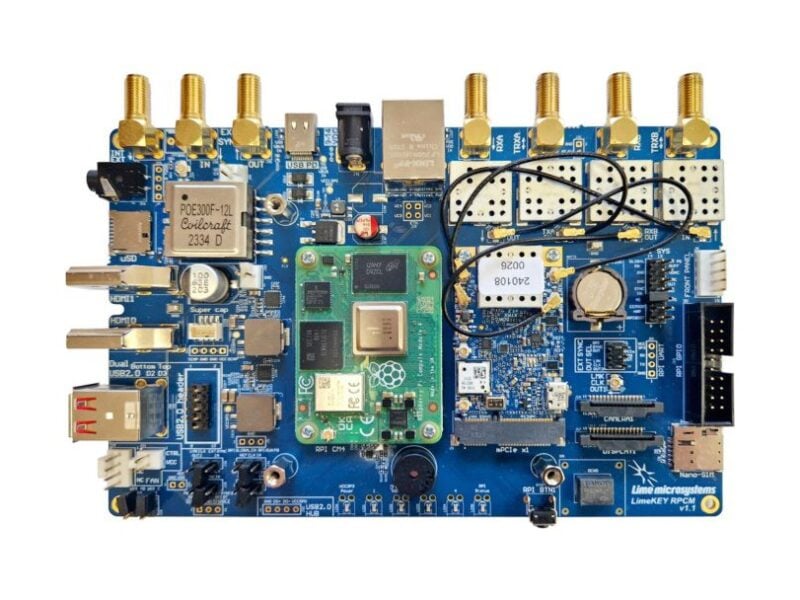
Raspberry Pi SDR for 5G small cells
 Cette publication existe aussi en Français
Cette publication existe aussi en Français
Lime Microsystems in the UK has launched its latest software defined radio (SDR) system using the Raspberry Pi CM4.
The LimeNET Micro 2.0 DE (Developer Edition) is a modular radio platform that uses the Raspberry Pi CM4 compute module and LimeSDR XTRX SDR
These are mounted on the new LimePSB RPCM main board that Lime says is significantly more versatile than the previous version of LimeNET Micro. That was limited by its support for a less powerful compute module (CM3) and an integrated SISO radio.
Researchers at Vodafone have previously used the Raspberry Pi 5 for a 5G small cell design.
A deluxe version comes fully loaded with the Amarisoft 5G stack and core, two smartphones, and ten SIM cards, making it a turnkey private 5G network solution.
Alternatively, the LimePSB RPCM board can be populated with the CM4 and a mini PCIe card for custom configurations. This also plays well for using the next generation CM5 compute module that is currently being tested by customers ahead of its launch later this year.
Lime Micro interests US intelligence in flexible radio technology
The 170 mm x 110 mm board is powered from a barrel jack connector (9-14 V, 2-3 A), USB Power Delivery (12 V, 1.5 A or 2.5 A) or power over Ethernet PoE (12 V, 2 A).
An integrated 2×2 MIMO front end module (FEM) provides higher output power using Qorvo driver amplifiers for a more comprehensive coverage range while keeping the frequency flexibility of the original LimeNET Micro. It also features integrated low noise amplifiers (LNAs) and SPDT switches that provide for both FDD and TDD modes of operation.
 If you enjoyed this article, you will like the following ones: don't miss them by subscribing to :
eeNews on Google News
If you enjoyed this article, you will like the following ones: don't miss them by subscribing to :
eeNews on Google News






